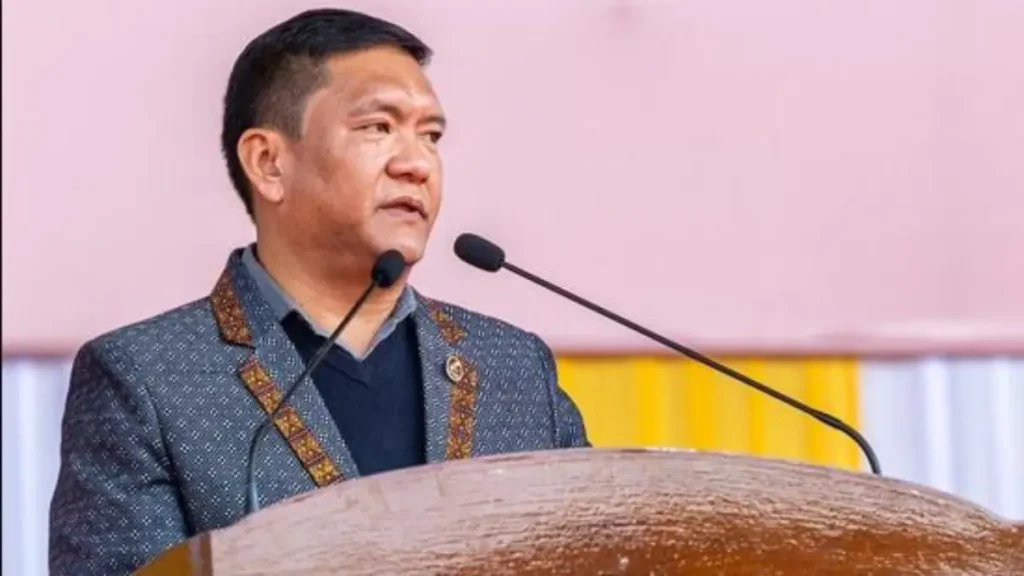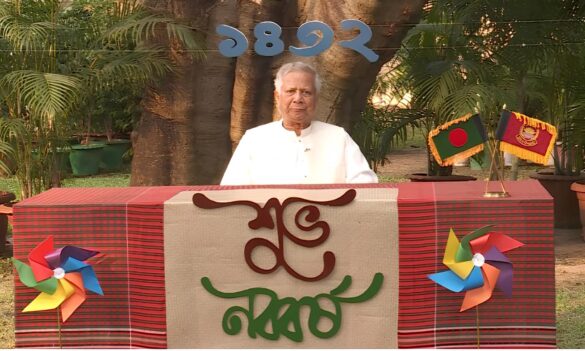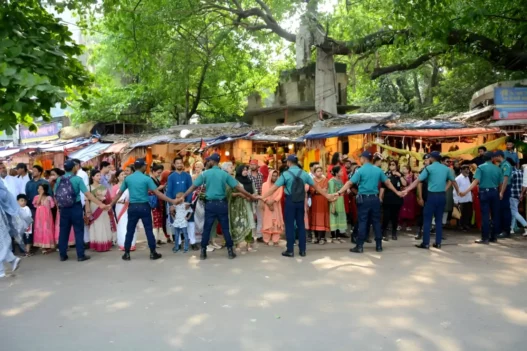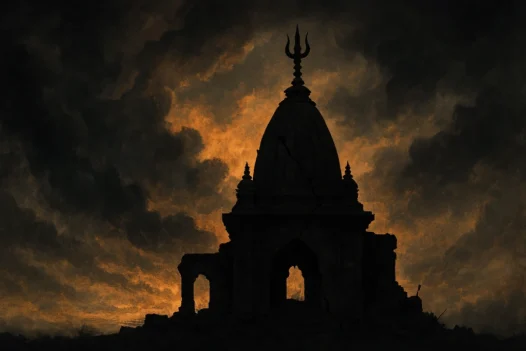As debates over the Arunachal Pradesh Freedom of Religion Act (APFRA), 1978, intensify, Chief Minister Pema Khandu has called for calm, urging people not to misunderstand the law’s purpose. Addressing concerns following a hunger strike by the Arunachal Christian Forum (ACF) on Monday at NIIS Nyokum ground in Naharlagun, he reassured that the Act is not intended to target any religion but to safeguard the state’s cultural heritage. Speaking during the 39th Statehood Day celebrations at IG Park on Thursday, Khandu explained that although the Act was passed in 1978 under the then-Chief Minister PK Thungon, it remained an incomplete document without proper guidelines. However, following a directive from the Gauhati High Court, the state government is now working on framing the necessary rules. He clarified that the process is being undertaken in compliance with the court’s order and is not politically or religiously motivated.
Expressing concern over misinformation circulating on social and mainstream media, Khandu emphasised the importance of maintaining communal harmony. He assured that the government is open to dialogue, with Home Minister Mama Natung set to engage with stakeholders from February 21 to address any doubts and foster transparency.
Historical context and rationale
Enacted in 1978, the Arunachal Pradesh Freedom of Religion Act was introduced at a time when the region was undergoing rapid socio-cultural changes. The Act was designed to address concerns over religious conversions that were perceived to be carried out by force, temptation, or fraudulent means. Nearly five decades later, as the state government moves to finalise the rules for its enforcement, the Act’s revival has once again ignited debate regarding its purpose, implications, and potential impact on the diverse religious landscape of Arunachal Pradesh.
At the time of its enactment, Arunachal Pradesh was witnessing significant shifts in its cultural and religious dynamics. Indigenous communities, with a rich culture of traditional beliefs and practices, including forms of Buddhism, nature worship (notably the Donyi-Polo faith), and Vaishnavism, had long maintained their religious identities. However, increased missionary activity, particularly from the 1950s onwards, began to alter the demographic and cultural contours of the region. Census data from the period indicate that while Christianity accounted for a minuscule portion of the population in the early 1970s, its presence expanded significantly in subsequent decades.
Against this backdrop, the Act was introduced with the intent to safeguard indigenous faiths by curtailing conversions that were deemed non-voluntary. The legislation sought to protect the cultural heritage of native communities by prohibiting conversions carried out through coercion or deceit. This measure was seen as a way to monitor and, if necessary, curb the spread of religious change that some viewed as a threat to the traditional way of life.
Key provisions of the Act
The Act specifically prohibits religious conversion “by use of force, inducement, or by fraudulent means.” It defines “religious faiths” in a manner that explicitly includes indigenous religions, encompassing the various traditional practices and beliefs of the native communities of Arunachal Pradesh. The explicit inclusion of indigenous practices, such as the Buddhist traditions of several local tribes, the nature-centric worship of Donyi-Polo, and the practice of Vaishnavism among certain groups, underscores the Act’s focus on preserving the region’s cultural heritage.
The legislative framework mandates that any act of conversion must be reported to the district’s Deputy Commissioner. Failure to report, as well as carrying out conversions under the prohibited conditions, attracts penalties of up to two years in imprisonment and a fine of up to Rs. 10,000. This reporting requirement was intended to serve as a deterrent, ensuring that conversions would be carried out transparently and with due regard to legal oversight.
Renewed debate over Arunachal Pradesh Freedom of Religion Act
Since its passage, the Act has not been implemented largely due to its contentious nature. Successive state governments have refrained from framing the necessary rules for enforcement, reflecting the complex interplay of political, social, and religious factors. The debate surrounding APFRA has intensified in light of significant demographic shifts in Arunachal Pradesh. By 2011, Christianity had grown to become the largest religion in Arunachal Pradesh, a trend that further complicates the political and social landscape.
The resurgence of interest in the Act was propelled by a Public Interest Litigation (PIL) filed in 2022 by Advocate Tambo Tamin, which highlighted the prolonged dormancy of the law and called for the state government to establish clear rules for its enforcement. In response, the Gauhati High Court (Itanagar bench) directed the state government to finalize the draft rules within a six-month time-frame. This judicial intervention has renewed the debate, prompting state officials and community leaders to revisit the issues surrounding religious conversion and cultural preservation.
In December 2024, Chief Minister Pema Khandu confirmed that the government intended to implement the Act after finalizing the draft rules, emphasizing that the new guidelines would not target any particular religious community. The administration’s stance is that the rules are aimed at ensuring transparency in the process of conversion while preserving the indigenous cultural heritage of the state.
On Monday there was a state-wide protest against the Act. ACF leaders, including President Tarh Miri and Secretary-General James Techi Tara accused Khandu of double standards noting his earlier promise to repeal the law. Miri further announced that they are preparing to stage a gherao of the state assembly on March 6, coinciding with the anticipated discussion on the Act in the house before its implementation. Many Christian groups worry that the vagueness of the Act could lead to wrongful accusations and harassment. Since conversions are inherently personal and spiritual, proving whether they happened voluntarily or under external influence can be subjective. There is concern that accusations of forced or induced conversions could be weaponized against Christian pastors, missionaries, and social workers, leading to legal troubles even when no coercion has occurred.
Meanwhile, supporters of APFRA argue that the Act is essential to preserving the culture and spiritual traditions of Arunachal Pradesh’s indigenous communities. They emphasize that APFRA does not ban voluntary religious conversions but merely ensures that they happen without coercion, fraud, or material incentives. Without such legal measures, they fear that indigenous belief systems, already under pressure, may eventually disappear, leading to an irreversible loss of cultural identity.
Impact of conversion on indigenous faiths
The increasing number of religious conversions in Arunachal Pradesh has raised deep concerns among indigenous communities, who fear the gradual decline of their traditional faiths. Indigenous spiritual practices are not just religious beliefs but integral to tribal identity, customs, and community life. These traditions shape festivals, rituals, and social structures that have been passed down for generations. However, with the rapid rise of Christianity in the state, many indigenous belief systems face the threat of being marginalized or forgotten.
One of the primary concerns is the loss of cultural continuity. Many indigenous rituals and practices are closely tied to nature, ancestral worship, and oral traditions that define the unique identity of each tribe. As more people convert, the younger generation may become detached from these customs, leading to their eventual disappearance. Supporters of APFRA argue that conversions, especially those influenced by external religious groups, are eroding the distinct heritage of Arunachal’s tribes, replacing it with practices that are not native to the region.
Additionally, conversions have, at times, resulted in social fragmentation within communities. In some villages, differences in religious beliefs have led to tensions between those who adhere to traditional faiths and those who have converted, altering long-established social dynamics. Traditional festivals and rituals that once unified entire communities are now sometimes skipped or altered to accommodate different religious beliefs, leading to concerns about the dilution of indigenous cultural identity.
Pathways forward: Balancing protection and freedom
The debate over the Arunachal Pradesh Freedom of Religion Act (APFRA) highlights the challenge of balancing two fundamental concerns – preserving indigenous faiths and upholding the right to religious freedom. While proponents of the Act argue that unchecked conversions threaten the survival of traditional tribal beliefs, critics warn that restrictive laws could infringe on personal choice and lead to targeted harassment. Striking a middle ground is crucial to maintaining both cultural heritage and constitutional rights.
One possible approach is ensuring that the enforcement of APFRA is clear, transparent, and free from bias. Defining what constitutes “force,” “fraud,” and “inducement” in specific legal terms could prevent the misuse of the law while still discouraging unethical conversion practices. Additionally, a fair and impartial implementation mechanism, such as an independent body to investigate conversion-related complaints, could help prevent selective targeting of any particular religious group.
At the same time, efforts to preserve indigenous faiths should go beyond legal restrictions. Promoting traditional beliefs through education, cultural programs, and community initiatives can strengthen indigenous identity without restricting religious choices. Government policies that support indigenous religious institutions, protect sacred sites, and document traditional practices could help sustain these faiths organically rather than through legal compulsion.
Ultimately, any solution must respect the pluralistic nature of Arunachal Pradesh, where multiple faiths have coexisted for generations. Ensuring that APFRA is applied fairly, while also taking proactive steps to promote indigenous traditions, can help bridge the divide and create a framework where both religious freedom and cultural preservation thrive together.
The Arunachal Pradesh Freedom of Religion Act, 1978, remains a complex and multifaceted piece of legislation. Its historical context and key provisions highlight an attempt to preserve indigenous cultural traditions during a time of significant social change. Today, as the state government moves to implement the Act through the finalization of detailed rules, the challenge lies in striking a balance between protecting cultural heritage and upholding the constitutional right to religious freedom. An inclusive, transparent, and carefully monitored implementation process will be essential to navigate the delicate issues at hand and to foster a climate of mutual respect among the diverse communities of Arunachal Pradesh.







